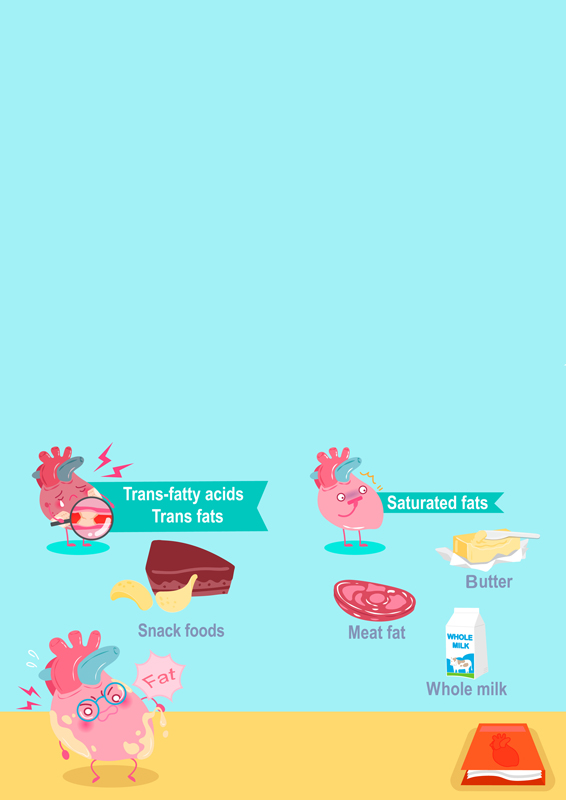IMPACTS OF SATURATED FATS ON CHILDREN
Presently, advertisements of fast food and junk food companies seen throughout the internet, television and the streets are having an impact on the children.They are almost always craving for the types of food which have next to zero nutritional value and

But, what many parents don’t seem to comprehend is that the problem isn’t only that these are non nutritional foods. In fact, they can be harmful to the human body. Additionally, they can cause sizeable damage to a child and may also hamper their growth. This is primarily due to the presence of Saturated Fats in their sustenance.
Why are Fats necessary for a child’s diet?
For the development of the brain and nervous system, along with their growth, fats are essential. In addition to supplying fuel for the body, vitamins A, D, E and K can also be obtained from Fats. They are also the building blocks of hormones and help to insulate all the nervous system tissues in the body.
What types of food contain Saturated Fats?
Saturated Fats are found in meat and also in diverse animal products like butter, shortening, lard, cheese and milk (except skim or non-fat). Coconut oil also contains excessive saturated fat, but has a different structure than normal saturated fats. Animal-based sources of saturated fat include:
• Dairy foods; such as butter, cream, ghee, regular-fat milk and cheese,
• Meat: such as fatty cuts of beef, pork and lamb, processed meats like salami, sausages and the skin on chicken and lard.
Plant-derived sources of saturated fat include: Palm oil, cooking margarine and copha and coconut oil, milk and cream.The saturated fats that can harm a child’s body heavily are the many manufactured and packaged foods. Such as fatty snack foods, deep fried take away foods, cakes, biscuits, pastries and pies and other similar types of food.
How can Saturated Fats harm a child’s body?
The main detrimental effect of consuming much saturated fat is that it can raise blood cholesterol levels and increase the risk of heart disease. Many children today may devour fats repeatedly which can lead to unwanted weight gain. This excess weight gain can cause an the increase in the risk of heart diseases, high blood pressure and diabetes during their transition to adulthood.
How can the child’s diet be controlled?
Avoiding restaurant and packaged food goes a long way in helping to curb the intake of saturated fats. Adapting a food plan with food naturally low in fat such as: fruits and vegetables, whole grains, lean meats and fish, and low-fat dairy products may also help.
When cooking meat, fish or poultry; opt for broiling, grilling or roasting for this allows the fat to drip away during cooking which cuts down calories. Frying, on the other hand, adds fat. Thus, it is advisable to cut down on fried items as well. Also note that products with reduced-fat and low-fat claims generally have more sugar added and just as many calories, therefore, avoiding such products would help too. If possible pack school lunches and meals for family outings as a healthy alternative.
“The most effective way to teach kids healthy eating habits is to set a good example yourself. Making sensible eating a habit, choosing foods wisely, and exercising regularly are the keys to a healthy lifestyle.”


